The 20 Best 2000s Horror Movies Ranked
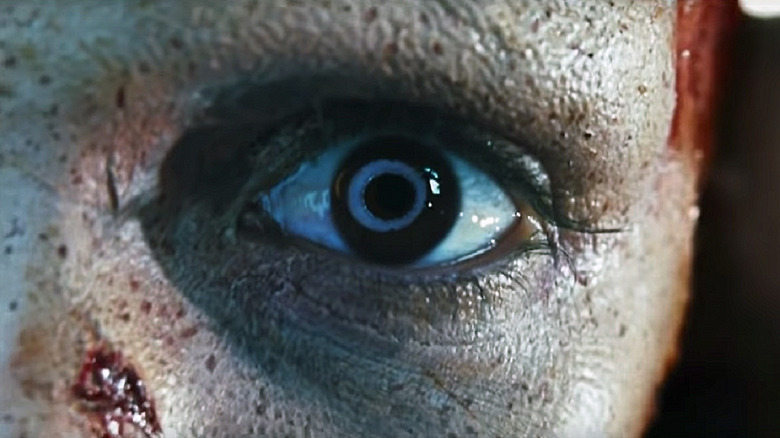
After the bountiful harvest the decade before, horror films fell into somewhat of a rut in the '90s. It was an era that saw the long overdue death of a number of once-lucrative franchises like Nightmare on Elm Street and Friday the 13th, thanks to sequels with lessening box office returns. However, a resurgence began with the dawn of the new millennium. With the emergence of digital film technology and affordable computing power, films were cheaper to make, while the internet was a brand new frontier for promoting and releasing movies.
Watching the grisly horrors of 9/11 and the Iraq War unfold in real time scarred the worldwide psyche, and a new breed of filmmakers were only too keen to exploit these anxieties with a frank and gritty approach to horror, one that was sometimes exploitative and offensive ("The Human Centipede"), sometimes grounded in brutally violent reality ("Saw", "Hostel"), and sometimes thoroughly nihilistic ("Martyrs"). Audiences became more sophisticated, and horror moved away from the stigma that had been unfairly attached to it in the '80s. Foreign -- and subtitled -- films grew more popular, as did the blurring of lines between genres. Horror films were becoming art.
So, drag yourself away from MySpace and TheFacebook and step back in time to the '00s, our Final Destination...
Dawn Of The Dead (2004)
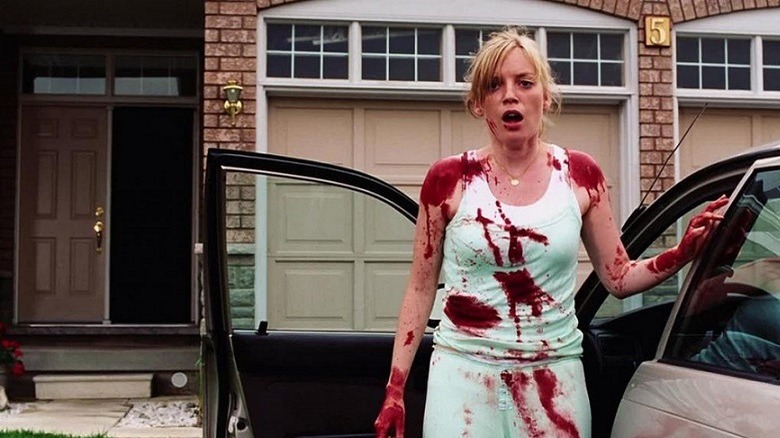
Narrowly pushing its almost-namesake "Shaun of the Dead" into position number 21, Zack Snyder's remake of "Dawn of the Dead" frequently finds itself popping up on peoples' lists of remakes that are better than the original. A particular fondness for George A. Romero's 1978 film excludes me from that group, but there's no denying that "Dawn of the Dead" is a damn fine remake. In both versions, the survivors of a zombie apocalypse find themselves barricaded up in a local mall, forced to defend themselves against the voracious undead that lurk within and without, as well as other groups of renegade humans.
Snyder's "Dawn of the Dead" opens with a brilliantly confident start, getting the whole zombie takeover out of the way in the opening credits. We're then instantly plunged into a nightmarish world of reanimated corpses, with no warning about the trouble to come as our lead, Ana, has to defend herself from her zombified neighbor's daughter. Bitten and transformed, her husband also joins in the fray, while chaos erupts in her once tranquil suburban neighborhood. "Dawn of the Dead" is chock-full of the touches that would come to be Snyder's trademarks: a bleached color palette, frenetic action scenes, and so on. All of Snyder's films look like animated comic books, which works particularly well here.
Splinter (2008)
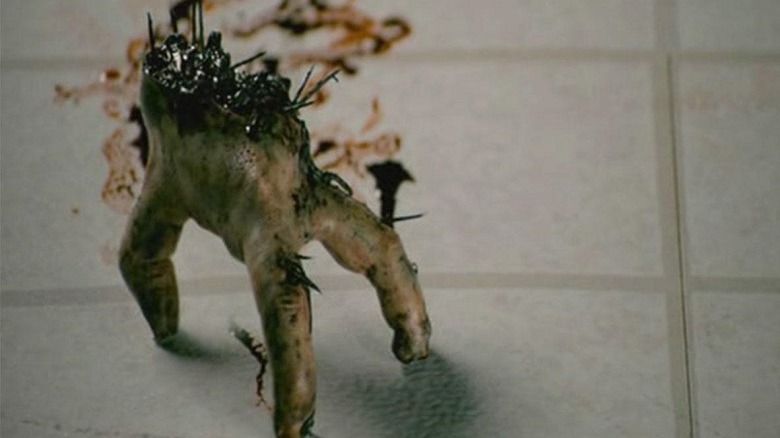
A young couple are car-jacked by a convict and his addict girlfriend while on a camping trip in Oklahoma, but when the car's tire bursts after hitting an animal on the road, all four of them are forced to take shelter at an abandoned gas station. They encounter a diseased pump attendant in the bathroom, and realize that he carries a ghastly infection that could doom them all.
A grisly and effective piece of body horror, "Splinter" gets it all right: a small -- and convincing -- cast confined to an individual location, battling against an overwhelming and terrifying foe. It's a low-budget creature feature at heart, but with a visually striking original monster, and it's made with the confidence of a film with 10 times the budget.
"Splinter" is also notable for being a horror film that should be shown to other horror film characters as a lesson in how it's done. The characters take sensible actions and exhibit rational behavior, and, in a great rarity for horror movies, no one dies because of stupidity or ignorance. "Splinter" has too many rapid jump cuts (perhaps as a budgetary requirement to avoid showing too much of the creature), but it still comes thoroughly recommended.
Hostel (2005)
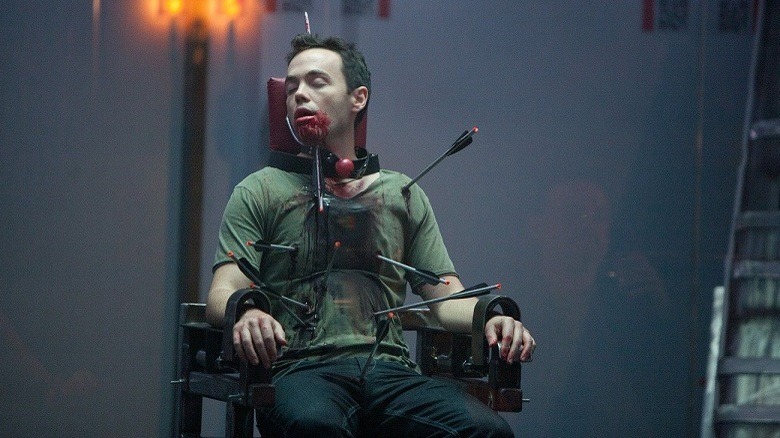
"Hostel" tells the tale of a group of unwary American and Icelandic backpackers who, having just graduated, are on a hedonistic trip across Europe. Tempted by the allure of a Slovakian hostel, what should be a holiday full of drink, drugs, and casual sex ends with the boys held captive and tortured by a sinister organization.
The Hostel films are thoroughly unpleasant, borderline racist in their attitudes towards the countries they're set in (Eli Roth's geography and political understanding of Slovakia is muddled, to say the least), and solely populated by an array of mostly unlikable characters. Along with "Saw," "Hostel" is considered the godfather of the genre known (not unfairly) as "torture porn."
But there's no denying the series' effectiveness as horror movies. "Hostel" is genuinely uncomfortable to watch and, where most directors would shy away from even the most gratuitous gore after a certain period of time, Eli Roth's camera lingers uncomfortably long on the carnage. It's reminiscent of Italian giallo, only without the distinctive style. Like other movies on this list, "Hostel" is a film that would have been best served without increasingly weaker sequels, but Hollywood insisted on torturing the audience as well.
Ginger Snaps (2000)
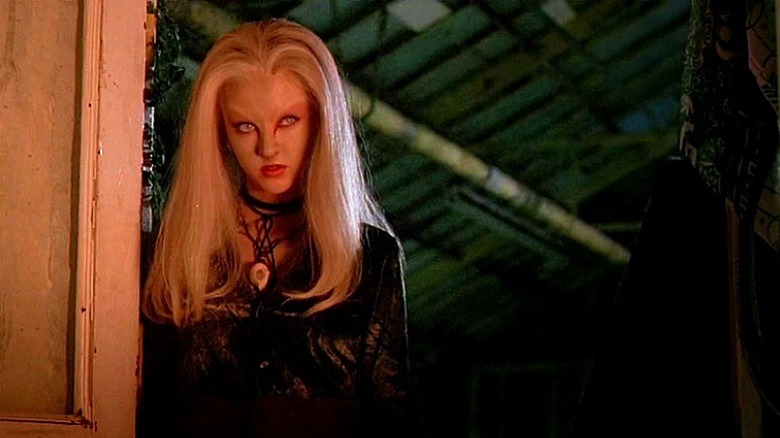
Despite their popularity in the '80s (with "American Werewolf in London" and the "Howling" franchise), werewolf movies became increasingly rare at the turn of the new millennium. However, "Ginger Snaps" came along and breathed brand new life (and metaphor) into the genre, making it a surprisingly effective little Canadian horror film.
Sisters Brigitte and Ginger live in the small suburban town of Bailey Downs, and are obsessed with the macabre. On the evening of Ginger's first period, she's attacked by a wild creature. Her physical wounds heal, but her personality changes. She's more confident, highly aggressive, and becomes sexually active, drifting further and further away from her reclusive sister -- oh, and she transforms into a bipedal wolf creature whenever there's a full moon.
The metaphor of lycanthropy as puberty is a strong running theme throughout, and it's excellent to see it in a film with two powerful -- and vastly different -- female leads. Like the equally excellent, strongly feminine, and similarly-themed "Jennifer's Body," there's a healthy level of dark humor throughout. It's the best werewolf film about menstruation out there. Period.
Freddy Vs. Jason (2003)
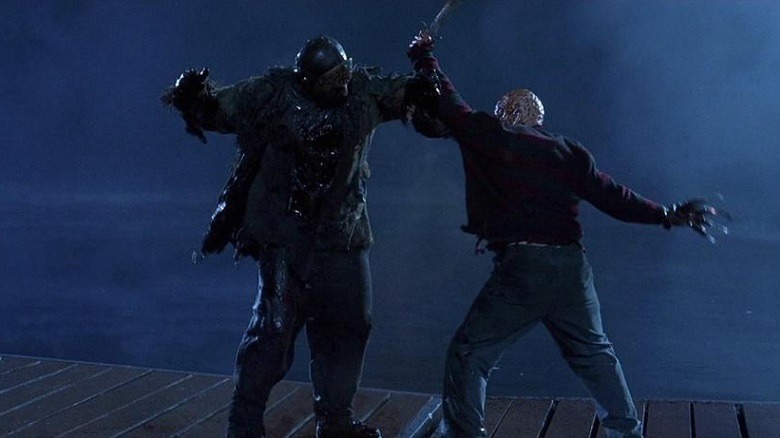
In the red (and green) corner: the knave of nightmares, the scourge of manicurists worldwide, Freddy Krueger! And in the blue corner, Vorhees a jolly good fellow: Jason! Not since the days of "Kramer vs. Kramer" had a match-up been so enthusiastically demanded. Ever since the closing scenes of "Jason Goes to Hell," in which a distinctive clawed glove dragged the murderous mute's iconic hockey mask into the dirt, excitement for this battle had been building to fever pitch.
The crispy-faced dream demon finds himself rendered powerless in Hell, weakened as the residents of his old haunt, Springwood, have forgotten about him. Using the last of his powers, Freddy resurrects Jason and sets him loose. As the fear of the Springwood residents increases, so does Freddy's power. However, when Jason gets a bit too free with his trusty machete, Freddy is forced to confront him, leading to the biggest conflict since Blur versus Oasis.
"Freddy vs. Jason" is not high art, and there is no subtlety or metaphor here. You know exactly what you're going to get from the title, and it delivers in spades. Horror can be fun. And topped off with an ending that at first seems unsatisfying but will have you howling, it's ideal beer and pretzel fodder.
28 Days Later (2002)
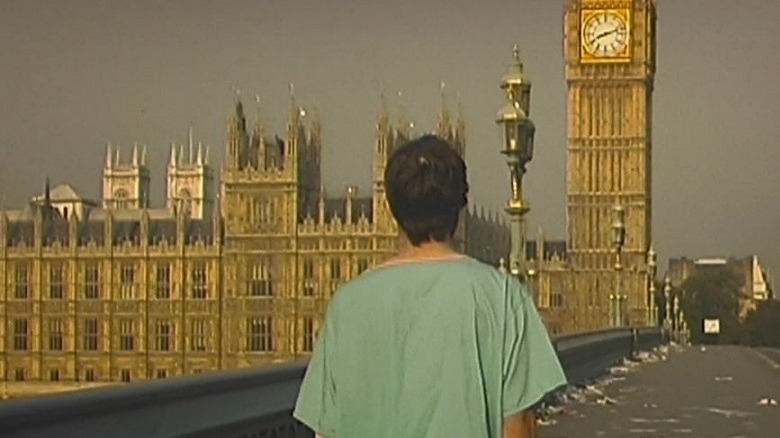
The opening scenes of this movie, in which Cillian Murphy wanders through a deserted London, resonate on a deeper level now. Like the recent pandemic, the reason for the quiet is similar: An infection is driving everybody off the streets. However, where "28 Days Later" had poor sods infected with a virus that transformed them into homicidal maniacs, the real-life equivalent just had people sitting at home angry that they couldn't go to McDonald's.
An Animal Liberation group frees infected monkeys from a laboratory, releasing a "rage virus" into the general populace. Society quickly breaks down, but our hero has been in a coma following an accident. Like Rick in "The Walking Dead," he wakes up to a whole new world.
Along with its excellent sequel, "28 Days Later" was a standout in both British and horror cinema. Shot with a reduced color palette and sharp contrast, it has an almost documentary feel to it. The shots of a deserted London are as eerie as they are beautiful, and the capital has never looked so haunted.
Battle Royale (2000)
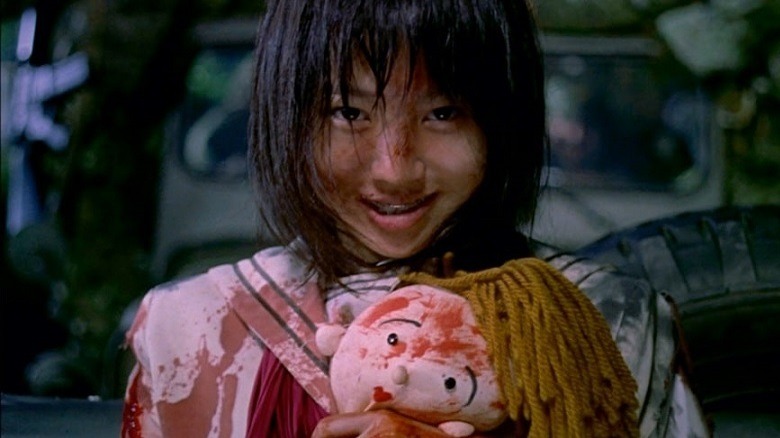
Pitting schoolkids against each other in a fight to the death had been done ages before "The Hunger Games," and in far bloodier fashion, too.
In "Battle Royale," the Japanese Government take groups of school children -- supposedly to combat the rise of juvenile delinquency, but in actuality to keep the populace terrified -- arms them with random weapons, dumps them on an island, and then waits until only one remains. Explosive collars attached to the kids' throats politely discourage any children from doing anything as foolhardy as attempting an escape. Alliances are made and broken, with betrayal only ever a breath away.
Courting controversy from the moment of release -- it arrived right after the Columbine shooting -- "Battle Royale" pulls absolutely no punches, axe blades, or crossbow bolts. Watching children behave like frenzied beasts in order to save themselves is still shocking today.
The Descent (2005)
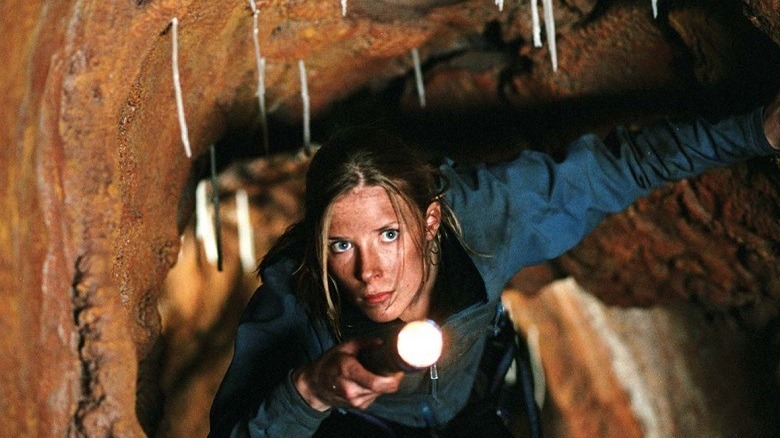
In writer-director Neil Marshall's "The Descent," Sarah, after the trauma of losing her partner in an accident, goes spelunking with her six friends in a North Carolinian cave network. It soon becomes very apparent that they aren't alone: Feral cannibalistic creatures live in these caverns, and they're not keen on being disturbed.
Horror works best when it prays on your fears. To this particular claustrophobe, "The Descent" is an exercise in terror from the moment they first enter the cave. It turns out that I have an overwhelming phobia of ravenous, blind, cave-dwelling humanoids as well, so this film is basically custom-engineered to trigger my fight-or-flight response.
With well-defined characters and motivations that aren't as obvious as they first seem, "The Descent" is a masterclass in building tension even before we get a glimpse of the beasts. The plot and dialogue are as tight as the crevasses the hapless cave explorers have to squeeze through, and the movie properly taps into our fear of the unknown. The only drawback is that "The Descent" has different ending depending on which territory you're in. The UK has the superior ending, which was considered too dark for American audiences; given that we've spent last hundred minutes underground, you'd would've expected the audiences' eyes to have gotten used to the dark by now.
Dog Soldiers (2002)
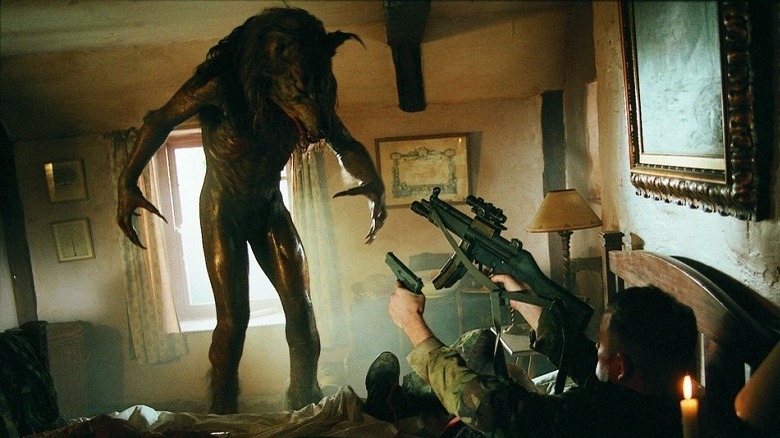
You wait ages for a Neil Marshall movie and then two come along at once. "Dog Soldiers" was released three years prior to "The Descent," and is a boisterous and fun action-horror movie.
A six-strong squad of British soldiers are in the Scottish Highlands, preparing to take part in a military training exercise with an SAS team. They arrive at the rendezvous and find the ravaged remains of the unfortunate Special Air Service troops and one lone survivor, and are forced to retreat to a farmhouse when an unknown foe begins stalking them. It turns out that the unknown foe is giant, furry, fanged. and likes howling at the moon -- and, unfortunately, silver bullets are far from standard military issue in Britain.
Horror movies in which civilians have to defend themselves against a monstrous foe are a dime a dozen, but "Dog Soldiers" brings military expertise into the mix. Werewolves versus battle-hardened soldiers makes for a different and novel horror dynamic. It's funny, eminently quotable, and has truly stand-out set pieces. The werewolves themselves are created via practical effects, and this adherence to old-school traditions makes for a properly gritty war movie -- one that just happens to involve Lycanthropes.
Pontypool (2008)
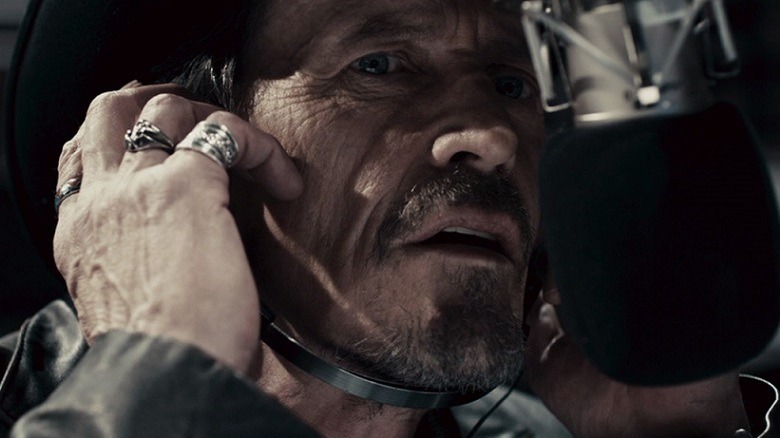
A truly terrific premise marks "Pontypool" as one of the most original horror films of the '00s, although you may not realize it at first. A siege setup, in which a small group of characters are confined to a specific location and forced to defend themselves against an external threat, is a common zombie movie trop. There's nothing original there. The infected, violent creatures outside who want to kill everyone aren't so unusual, either.
It's the nature of the virus that makes "Pontypool" stand out from the crowd: The infection is spread through language, not blood or saliva. Certain words trigger the sickness in certain people, and we experience the whole outbreak, from the first cases to the apocalypse, from inside a radio station, itself a carrier of the spoken word.
"Pontypool" is a film that's better experienced than read about, so I'll keep this brief. With a virus that might well leap to the written word, the more concise this review is, the better.
Slither (2006)
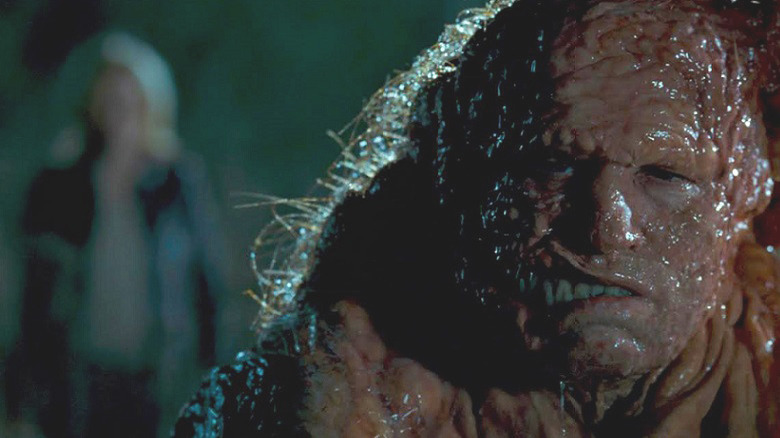
Before James Gunn became known "Guardians of the Galaxy" and "The Suicide Squad," he wrote for Troma Studios (and provided the script for the aforementioned remake of "Dawn of the Dead"). It wasn't until 2006 that he'd make his feature film directing debut with "Slither."
And what a debut it is. The same dark humor that runs through Gunn's other work appears here, as well as a distinctive visual flair that marks him as a talent to watch and a number of his recurring cast members, including his ever-present Alabama muse Michael Rooker. In "Slither," Rooker plays Grant Grant, a wealthy businessman who (ignoring the lessons from "The Blob") gets infected with an extra-terrestrial parasitic lifeform that arrives via a fallen meteorite. After he kidnaps a local woman to use as a warm nest for his larvae, only the local police chief and his hapless crew can stop Grant's worm-like spawn from taking over their small town.
"Slither" proudly wears its B-Movie credentials on its grotesque, infected sleeve, making it a fun monster movie with impressive practical effects. Sadly, despite being critically acclaimed, it failed to recoup even its meager budget -- but as a piece of work, I imagine it's something that James Gunn continues to be proud of.
REC (2007)
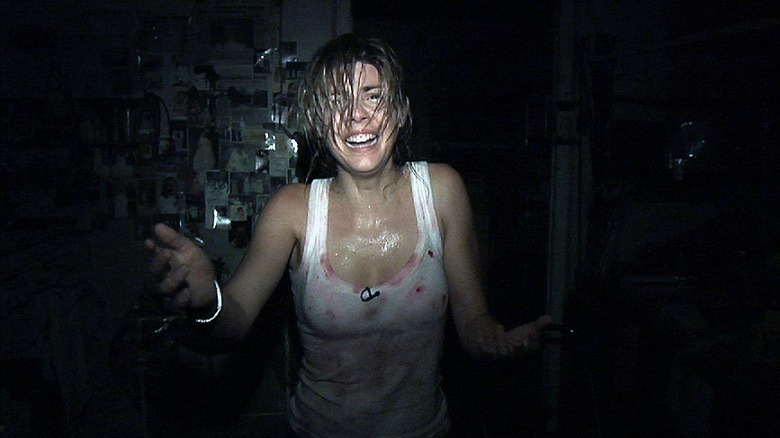
The "found footage" phenomena, popularized with great financial returns by 1999's "The Blair Witch Project," was often used as a means of disguising a low budget or a lack of directorial skills. In "Cloverfield" (a film that narrowly missed this list due to its categorization -- is it a horror movie or not?) and "REC," this was anything but the case. Both used the format to its full advantage, delivering effective and clever chills.
Angela is a reporter covering the night shift at a fire station for the TV series "While You're Sleeping." Escorted by her cameraman, Pablo, she accompanies the crew to an emergency call regarding a trapped old woman. Upon arrival, the firefighters are attacked by the woman and find themselves locked in the building, sealed off by the police and military in an effort to contain an outbreak.
In many found footage films, the characters' excuse for continuing recording the unfolding horror is flimsy at best. Here, there is a decent justification -- they're reporters, and the footage is from Pablo's camera -- and the nature of the footage makes for a claustrophobic and tense ride.
Final Destination (2000)
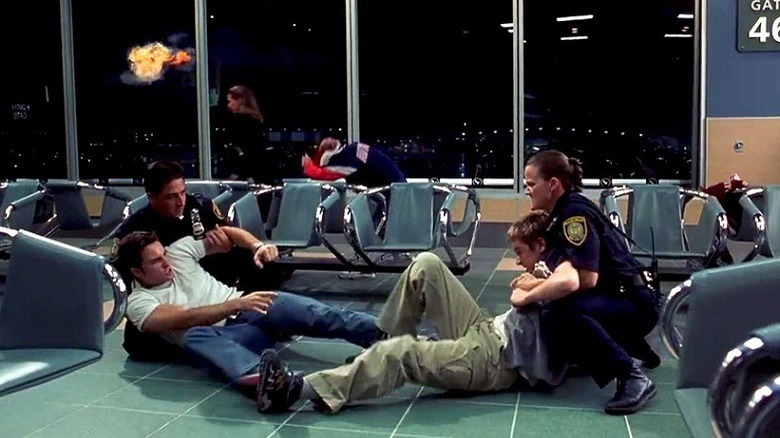
"Flight 180" was originally written as a spec script for "The X-Files," but the writer liked it so much that he submitted it to producers as a feature film. New Line dutifully picked it up, reworked it as "Final Destination," and launched one of the most successful horror franchises of all time.
The first movie follows a group of friends on holiday. Having boarded a plane, one of them, Alex, gets a vivid premonition that the plane will explode. He tries to warn his buddies, and in the resulting hubbub, he and his friends are dragged from the plane, missing the flight. The plane, as prophesized, explodes -- but it's not such a lucky escape for Alex and his friends. They've cheated death, and the Grim Reaper isn't overly fond of being swindled.
It's a genius central premise – a slasher flick without the slasher -- and one that carries this anthology series from strength to strength. There was a TV hospital drama in the UK called "Casualty," in which the first chunk of any episode saw the cast setting themselves up to have a variety of awful accidents. "Final Destination" strikes a similar chord, with each character getting killed off in convoluted ways. Half of the fun is working out the fate of each of the doomed survivors. Genre favorite Tony Todd is a series regular, serving as the connective tissue of the whole saga.
Saw (2004)
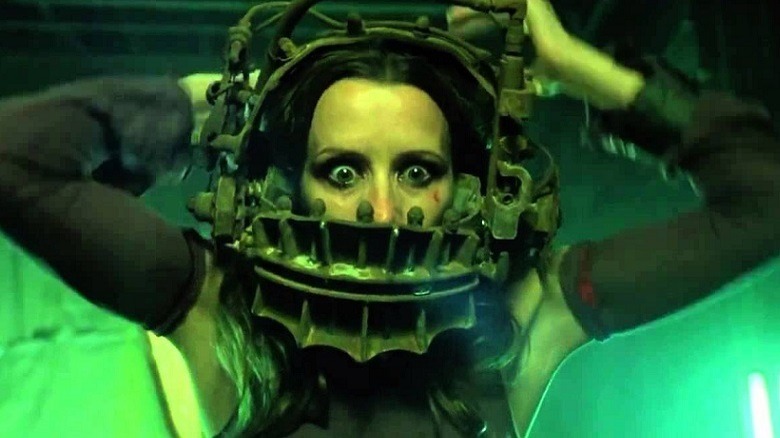
Before the "Saw" franchise become a muddled quagmire of plot twists and confusing timelines, the first movie was a neat standalone low-budget horror-thriller that arrived with little fanfare but met enough critical and financial success to spawn a franchise.
Two men wake up in a locked bathroom, trapped by chains. A corpse lies between them, apparently a suicide victim, with a tape recorder in his pocket. Both men gradually realize that they are prisoners of the Jigsaw Killer, who kidnaps his victims and places them in traps that test their will to live. If they survive, they will be freed. All of Jigsaw's victims have slighted him in some way, and only by passing his challenges will they be redeemed.
With subsequent Saw movies, the traps and situations became ridiculously elaborate (and increasingly impractical), and the series descended into the grisly realms of torture porn. The first film, though, remains a taut thriller with a genuinely surprising shock ending. It's less convoluted than its sequels, which chugged on with a never-ending parade of apprentices after the Jigsaw Killer's death, and is atmospheric and well-acted. It should have remained a single, standout movie.
The Mist (2007)
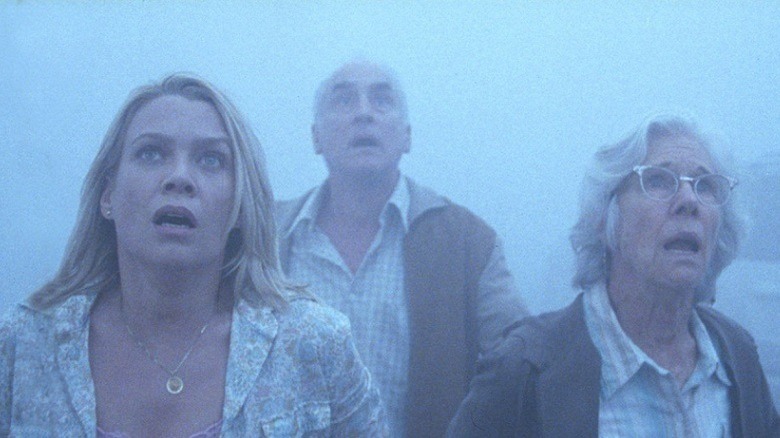
Adapted from the Stephen King novella of the same name, "The Mist" tells the story of a group of people trapped inside a grocery store by a mysterious mist that has descended from the mountains. However, it soon becomes clear that some of the people trapped in the building are just as dangerous as the things that lurk in the fog.
Notorious for having one of the bleakest and most nihilistic endings ever put to film, "The Mist" is the closest we've come yet to a full H.P. Lovecraft adaptation from King. It features a veritable menagerie of horrific creatures straight from the Cthulhu mythos that'll haunt your nightmares for some time to come. Religious zealot Mrs. Carmody is one of the best villains to debut in the cinema for quite some time.
Frank Darabont and King together never fail at being a magical combination -- "The Shawshank Redemption" and "The Green Mile" are their two previous collaborations -- and "The Mist" is another wonderful example of how the two artists complement each other. A later black and white release of "The Mist" improved upon an already superlative work, drenching the film in the heady atmosphere of a '50s or '60s monster movie.
American Psycho (2000)
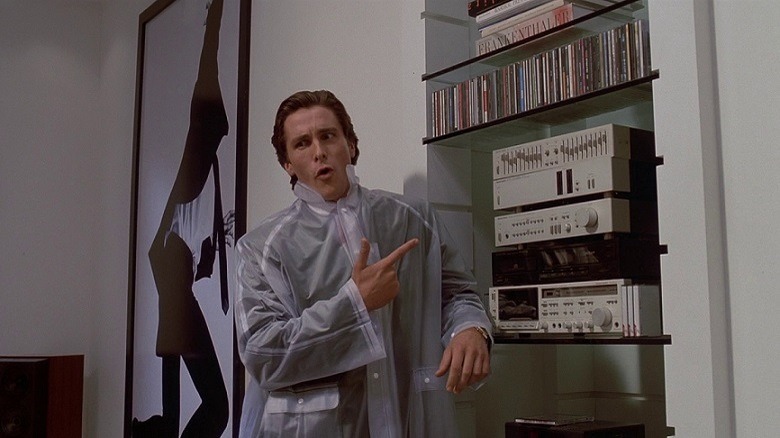
Many considered the Bret Easton Ellis book "American Psycho" to be unfilmable. It's a tough read, with numerous grisly murders described in lurid and vivid detail, and it's not helped by the fact that the lead character is thoroughly unpleasant and unlikeable as well as a textbook example of an unreliable narrator. Director and screenwriter Mary Harron does an admirable job, however, even for a film that Ellis himself admits that he doesn't like.
It's the '80s, and Patrick Bateman is a handsome Wall Street employee, but has a dark and sinister second life. By day he works in mergers and acquisitions, by night he loses himself in murders and executions. It's as an effective satire of the '80s and the decade's obsession with wealth and social standing as it is a horror film, with great swathes of dark humor that offset the unpleasantness unfolding onscreen. The ending divided audiences, implying that some of the murders are all in Bateman's imagination, but the source material follows such an odd narrative structure that it's hard to think of another way the movie could have concluded (just pretend that the sequels never happened).
Let The Right One In (2008)
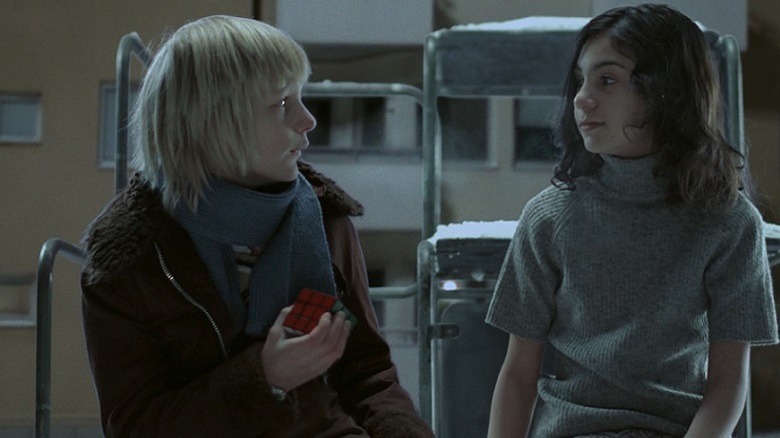
In the suburbs of Stockholm, Oskar is a young weak-willed 12-year-old boy who is frequently targeted by local bullies. He strikes up a friendship with his mysterious new neighbor, Eli, but it becomes clear that she and her mystery guardian harbor a dark secret.
I've sung the praises of this classic vampire film before, and it's always a delight to revisit it. "Let the Right One In" does a wonderful job transplanting classic vampiric lore from gothic mansions and castles to mundanity of suburbia. Despite Eli's terrifying nature, "Let the Right One In" is essentially a film about friendship and love, albeit a grittier and more poignant one than "Twilight" and its ilk. Despite that, the movie doesn't shy away from the inherent brutal nature of vampirism -- but notably, it doesn't glorify the bloodshed, either. Violence is in Eli's nature, it's simply matter of fact. "Let the Right One In" is also painfully sad without being overwrought; it's one of the most beautifully shot films on this list.
Drag Me To Hell (2009)
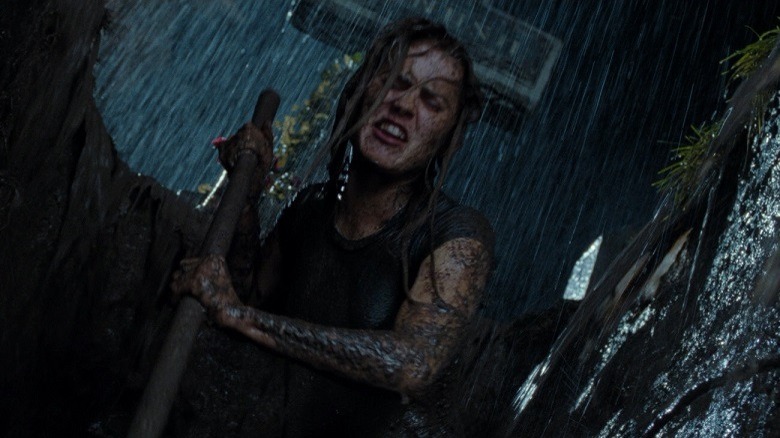
By 2009, "Evil Dead" director Sam Raimi hadn't made a horror film for a while, and "Drag Me to Hell" was his confident and bold return to the genre. Raimi's writing and direction has a very distinct style, and "Drag Me to Hell" came at the perfect time, cutting through a swathe of J-horror remakes and torture porn to deliver something that was scary, but that also had a sense of anarchic mischief and fun.
Bank employee Christine, eager to impress her boss and score a promotion, denies an old woman an extension on a loan. The old woman, who is of Roma descent, places a curse on her. Christine is forced to try and free herself before the enchantment culminates with her being banished to Hell.
"Drag Me to Hell" rarely lets up, with a frenzied pace and a series of gory and gruesome (and increasingly daft) set pieces that'll have you simultaneously shrieking and cringing. Any film with a talking goat will get my vote, and the ending of "Drag Me to Hell" is absolutely perfect, delivering a sucker-punch to anybody who tries to take the movie too seriously.
Eden Lake (2008)
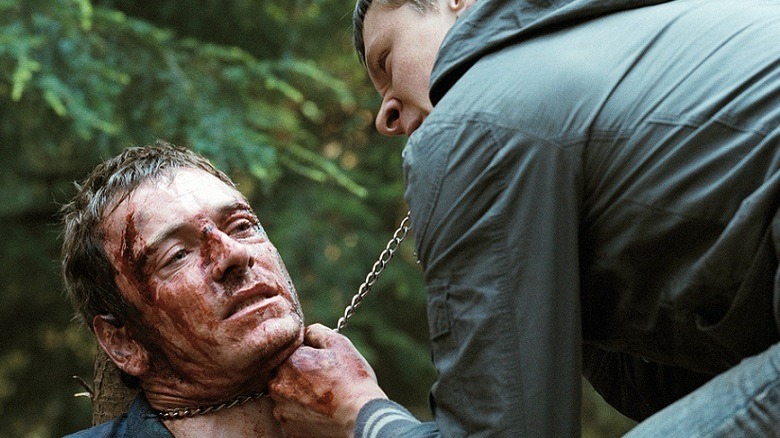
Sadly, the gallows humor in "Drag Me to Hell" is the last gleam of sunshine we'll get on this list. The top two spots are taken up by movies that couldn't be any more bleak. One common factor among all the top three films, however, is there are no happy endings.
In "Eden Lake," a survival-horror film set in England, a young couple on a romantic camping trip finds their tranquility ruined by a group of rowdy teenagers. When the boyfriend, Steve (Michael Fassbender), dares to confront the delinquents and asks them to turn their music down, the couple are chased down, captured, and tortured, all in a mindless and feral act of petty revenge.
With no supernatural trappings and shot with documentary-style realism, "Eden Lake" is somewhat of an ordeal. It doesn't shy away from the violence, and the film becomes increasingly more uncomfortable to watch as it goes, culminating in a ghastly final act. The perfectly-cast teenagers, free to indulge their sickest fantasies, are immoral, vindictive, and singularly terrifying. Vilified by some, who accused "Eden Lake" of demonizing the working classes, the film is "Deliverance" by way of a rough UK council estate, and its horror feels all too authentic, believable, and real.
Martyrs (2008)
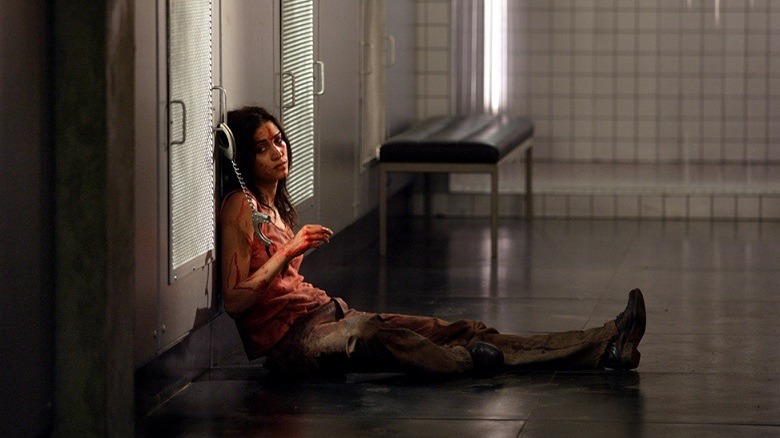
15 years after her abduction, Lucie and a friend embark on a bloody quest for revenge against her captors. It's a seemingly well-trod premise shared by countless horror films. But that description does "Martyrs" no justice, as it only describes a fragment of the tale. Like a complex puzzle, "Martyrs" is multi-faceted, and its small story of retribution expands until its positing theories about the very nature of theism and belief.
Along with "Inside" and "Frontiers," "Martyrs" was part of a new wave of French horror in which the taboos of violence and sex were dealt with head-on. Courting controversy, this movement has its detractors, and has met with considerable critical resistance -- it's easy to look at "Martyrs" as yet another example of torture porn.
But "Martyrs" is far more than that. I'll admit that, on first viewing, I wasn't fond of it. I thought it beautifully shot and scored, but it was too grueling, even for this hardened horror fan. Particular scenes lingered in my mind way longer than I was comfortable with, and as the credits rolled, I couldn't recall a film that had made me ever feel quite so miserable.
And yet, "Martyrs" stuck with me. It burrowed in and stayed there. It made me uncomfortable, but it also made me think -- and isn't that what real horror should do? "Martyrs" is unforgiving, layered, transgressive, and a wonderful example of cinema upon which later horror filmmakers can build.
Read this next: 5 Horror Movies To Stream If You Loved Malignant
The post The 20 Best 2000s Horror Movies Ranked appeared first on /Film.
